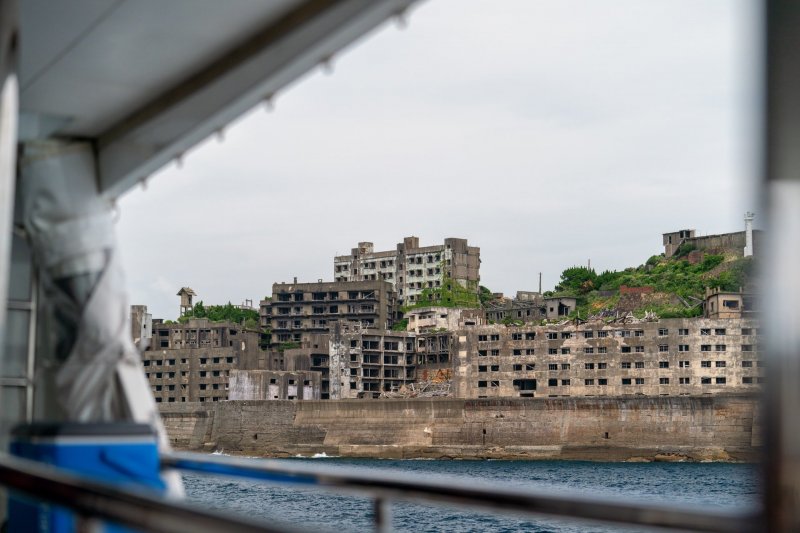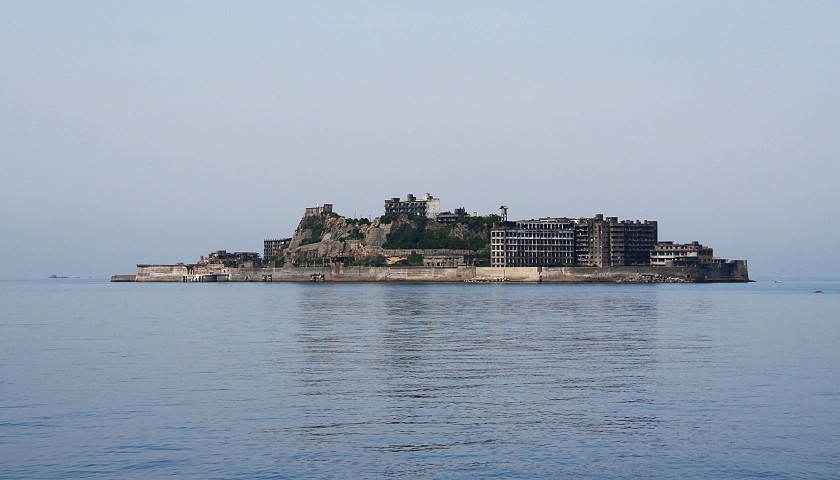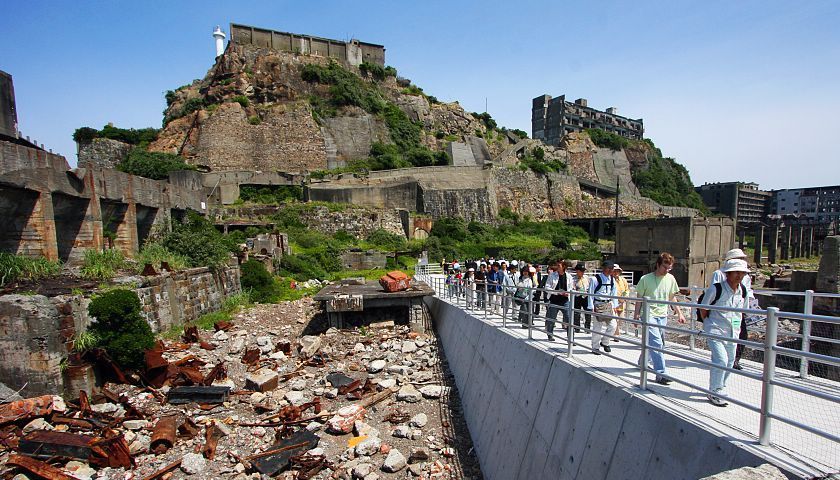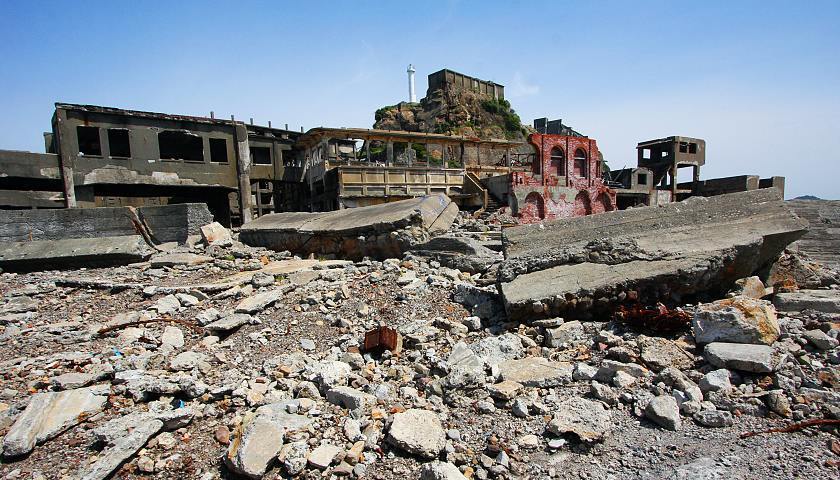
Overview
Gunkanjima, also known as Hashima Island, is a small, uninhabited island located about 15 to 20 kilometers from Nagasaki in Japan. It has earned the nickname 'Battleship Island' because its silhouette resembles that of a battleship when viewed from a distance. The island was once a thriving coal mining hub, operated by Mitsubishi, and peaked in population during the mid-20th century. Following its abandonment in 1974, Gunkanjima has become a symbol of ghost towns and industrial heritage, drawing visitors interested in its eerie atmosphere and complex history.
Historical Significance

Coal mining on Gunkanjima began in earnest in the late 19th century, with coal discovered on the island as early as 1810. By 1890, Mitsubishi acquired the island and initiated the development of modern infrastructure to support the mining operation. At its zenith during the 1950s, Gunkanjima housed over 5,300 residents, making it one of the most densely populated places in the world, with a population density that reached 83,500 people per square kilometer[2][11]. The island featured a self-sufficient community with high-rise apartment complexes, schools, restaurants, a cinema, and medical facilities, illustrating the rapid industrialization of Japan[9][17].
The coal production peaked at around 410,000 tons annually during World War II but began to decline due to a transition from coal to petroleum as a primary energy source. The coal mine ultimately ceased operations in 1974, leading to the evacuation of its last inhabitants, and the buildings fell into decay[1][5].
UNESCO World Heritage Site

Gunkanjima was designated a UNESCO World Heritage Site in 2015, recognized as part of the “Sites of Japan's Meiji Industrial Revolution.” This designation brought attention not only to its rich industrial history but also to the darker aspects of its past, including the forced labor of Korean and Chinese individuals during the war[4][16]. The island remained closed to the public until 2009 when special tours were introduced, granting visitors a glimpse into its haunting ruins[12].
Access and Tourism

Today, Gunkanjima is accessible only through guided tours, with no unauthorized entry permitted due to the dangers posed by crumbling structures. Tours are typically available from various departure points in Nagasaki, with several companies offering different packages. Prices range from approximately ¥3,600 to ¥4,200 for adults, around ¥2,000 to ¥2,100 for children, depending on the provider and location of departure[9][12]. Tours last about three hours, allowing approximately 40-50 minutes of exploration on the island itself. Weather conditions can impact tour operations, sometimes leading to cancellations[4][15].
Visitors can learn about the history of the island and explore limited areas, such as residential buildings and industrial ruins, within designated paths to ensure safety. The presence of decaying structures, overgrown spaces, and remnants of past life creates an atmosphere that has inspired numerous cultural references, including its features in films like Skyfall and its influence on visual media like Attack on Titan[5][10].
Architectural Features and Ruins

Gunkanjima's unique landscape is defined by its impressive concrete buildings, some towering as high as ten stories. The structures serve as stark reminders of the island's once-bustling life. Notable buildings include Block 65, a large concrete apartment complex, and other elements like concrete tanks and staircases that present an industrial charm now succumbed to nature[6][17]. The island's ghostly ambience, matched with its decaying architecture, attracts photographers, historians, and those drawn to the allure of abandoned places.
Natural reclamation of the land has begun; green plants dot the remnants of this former community, adding to the haunting yet captivating aesthetic of Gunkanjima[5][11]. The remnants tell poignant stories of a once thriving society, reflecting Japan's rapid modernization and the intricate narratives of its past.
Cultural Impact and Legacy
Gunkanjima remains a topic of discussion regarding its historical legacy, carving a dual narrative that celebrates industrial achievement while acknowledging the suffering endured by many. As such, it serves as a significant educational site where guests can learn about both the triumphs and tribulations associated with Japan's industrial past, as well as the consequences of wartime actions.
As Japan continues to recognize its historical sites, Gunkanjima stands out as a testament to the complexities of industrialization, human rights, and the passage of time. The juxtaposition of its breathtaking but somber ruins against the backdrop of a tranquil sea creates an enduring fascination for those who visit or learn about this enigmatic island.
Get more accurate answers with Super Search, upload files, personalized discovery feed, save searches and contribute to the PandiPedia.
Let's look at alternatives:
- Modify the query.
- Start a new thread.
- Remove sources (if manually added).
- Request a manual search from our human research team.